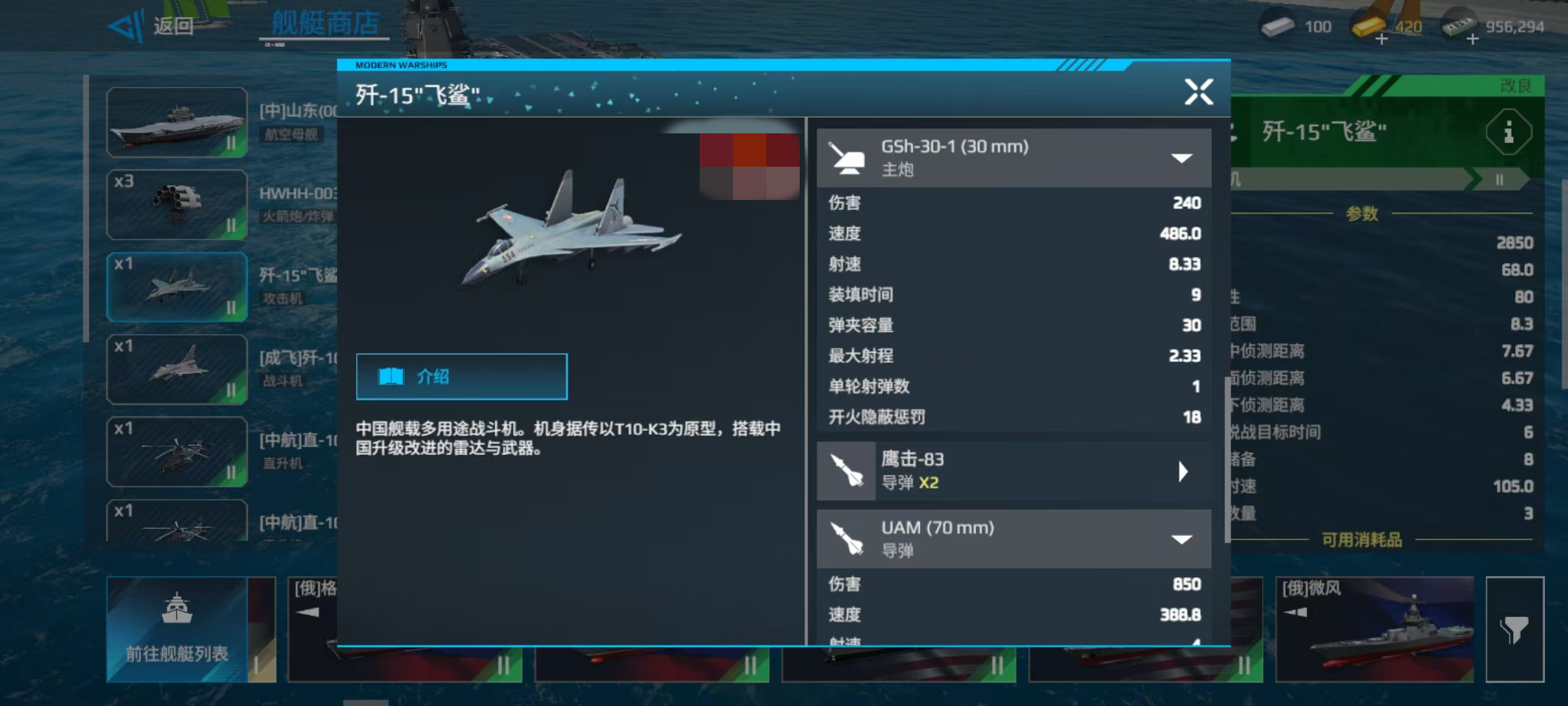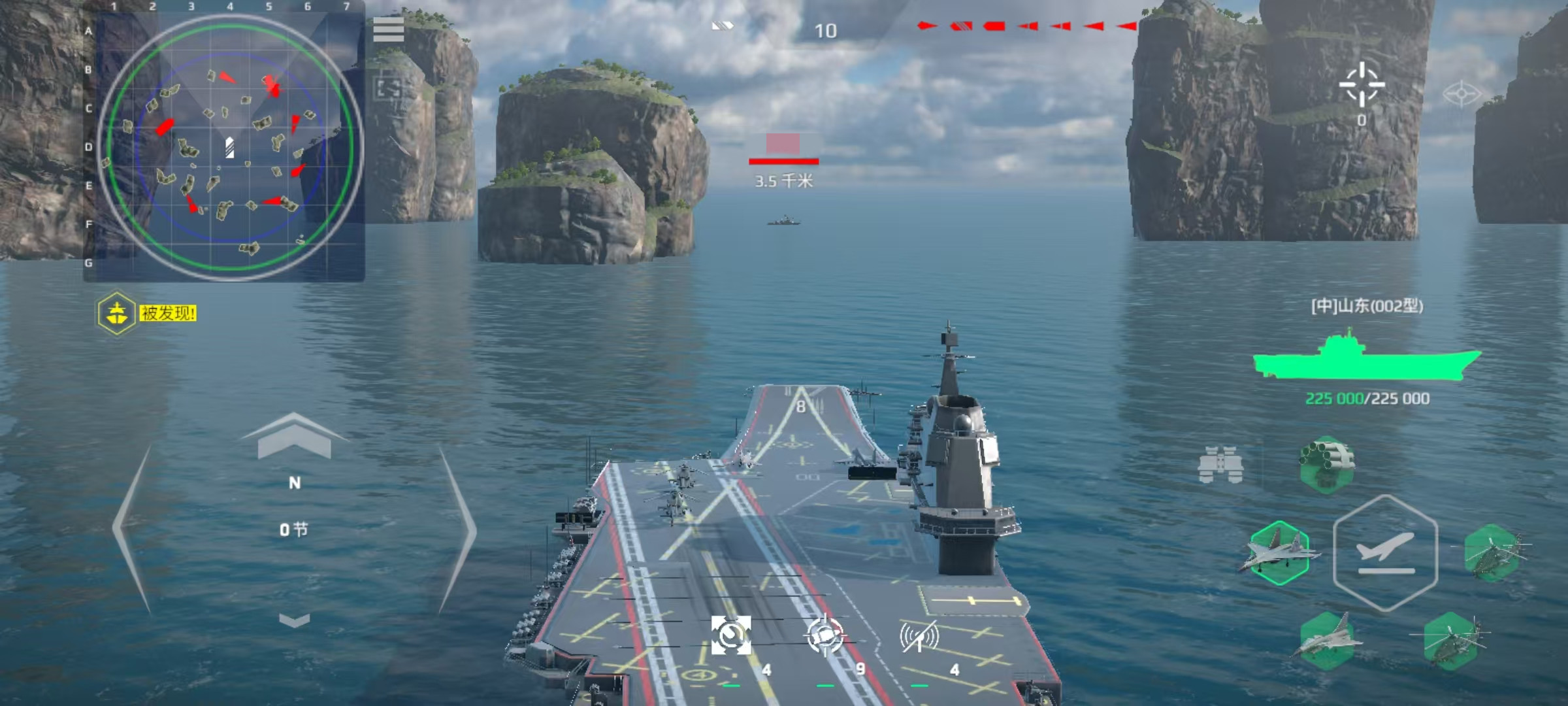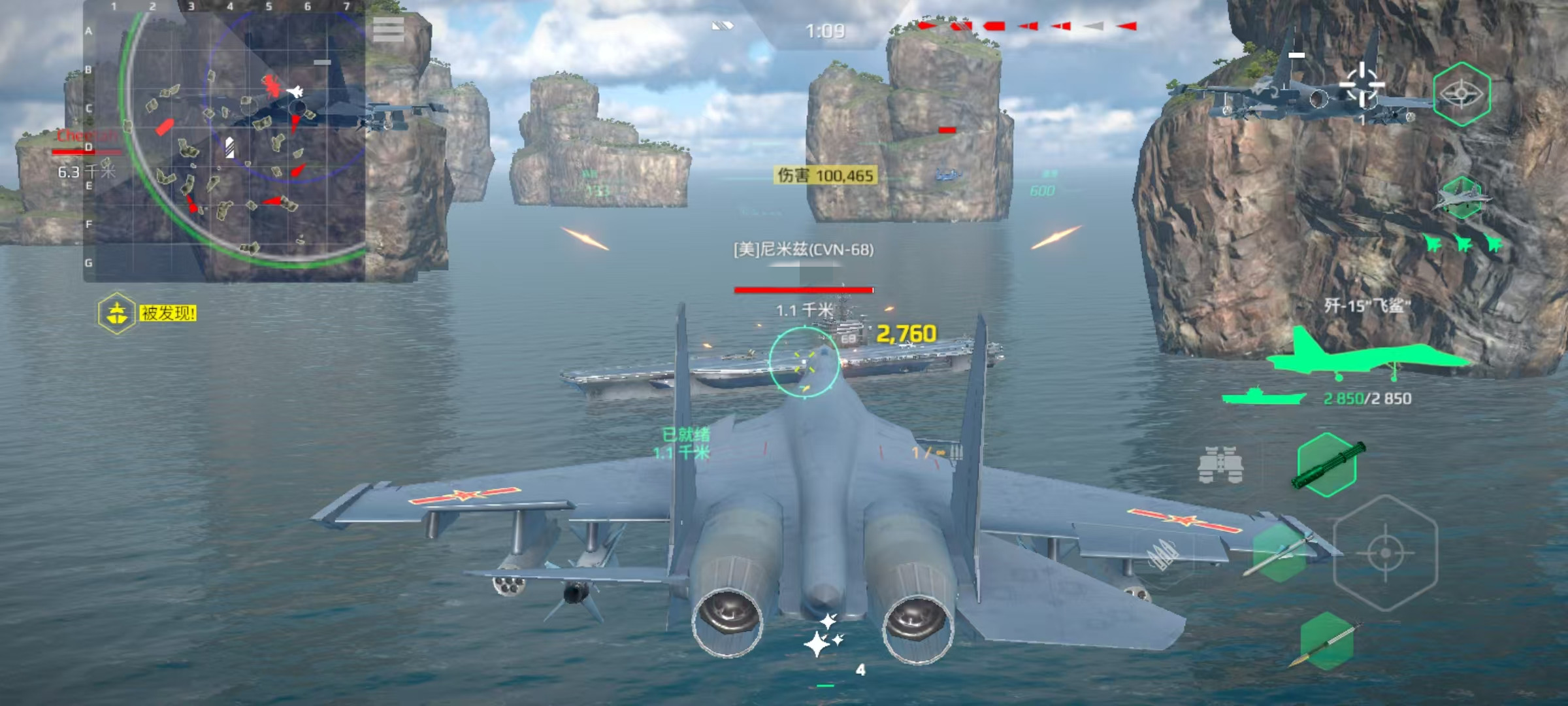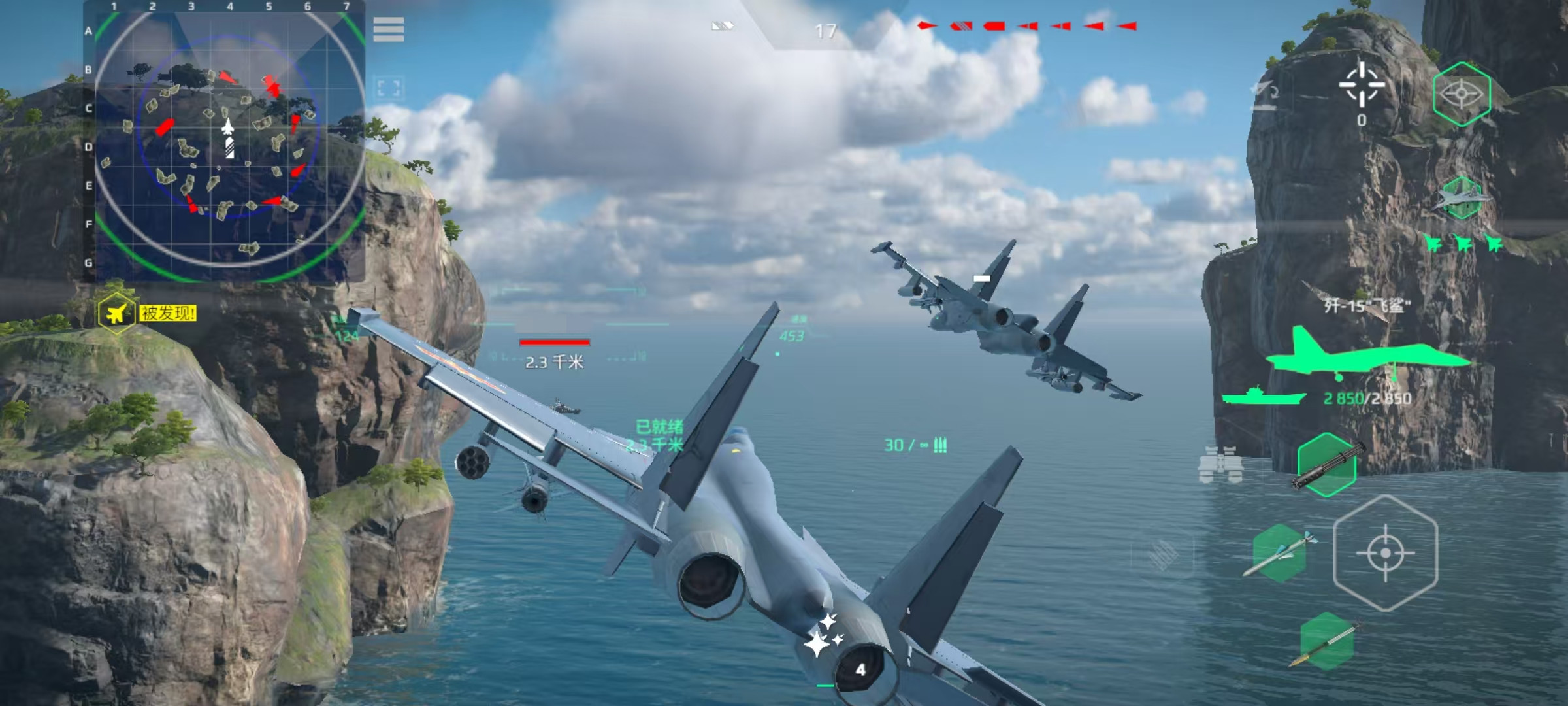In the game Modern Warships, a lot of the current main equipment of navies around the world is realistically recreated. In addition to ships and submarines, there are also a variety of carrier-based aircraft, with the J-15 being one of them. Today, I will introduce how the J-15 performs in Modern Warships. Many new players focus only on various powerful ships and submarines, neglecting the attributes of carrier-based aircraft, which are actually very important.

The full name of the J-15 is the J-15 Flying Shark, a Chinese-made multi-purpose carrier-based fighter that falls under the category of an attack aircraft, equipped with China's upgraded radar and weapons. In terms of attributes, it is a level 5 accessible secondary weapon, operated via manual control. It has a durability of 2850, speed of 68 knots, maximum speed of 105 knots, maneuverability of 80, formation size of 3, and air reserve of 8. The visibility range is 8.3 kilometers, underwater detection distance is 4.3 kilometers, surface detection distance is 6.7 kilometers, and detection distance when attacking is 7.7 kilometers.

It does not have stealth capabilities in actual combat, and the time for tracking disengaged targets is 6 seconds. This weapon can be equipped for about $300,000. Generally, this equipment is mounted on Chinese-made aircraft carriers, such as the Type 002 Shandong, which is equipped with this attack aircraft. After deployment, it can use its multiple weapons for attacks, including the GSH-30-1, a 30mm main gun, with damage of 240, a rate of fire of 8.33, a reload time of 9, and a magazine capacity of 30. It also carries two YJ-83 anti-ship missiles, each with a damage of 8500 and a reload time of 10. Additionally, it is equipped with UAM 70mm missiles, with damage of 850, a reload time of 8.5, and a capacity of 6 rounds.

Overall, this carrier-based aircraft, among secondary aircraft, has a relatively considerable total damage from missiles and rockets, posing a significant threat to enemy ships. Some of its weapons cannot be intercepted by anti-air defenses, and its cannons and rocket launchers are not affected by the opponent's heat decoys, resulting in a higher hit rate and survivability in actual combat. Of course, as a secondary aircraft, its overall performance is inferior to that of a tertiary aircraft, and it may struggle when facing higher-level enemies.

After reading my analysis and introduction, everyone should have a clear understanding of how the J-15 performs in Modern Warships. Among aircraft of the same level, it is indeed a rather outstanding carrier-based aircraft. Before you can equip a tertiary aircraft, choosing the J-15 is a pretty good option.


















